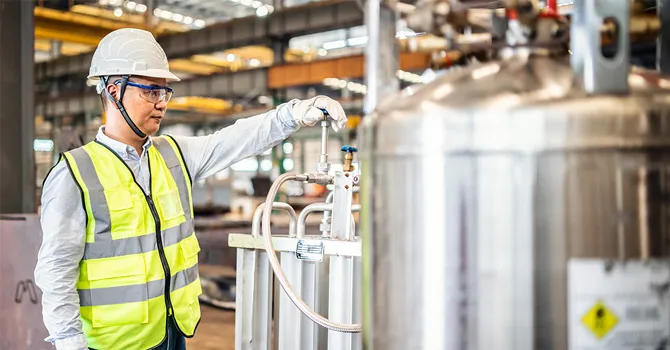Several factors, including a long-term surge in demand for commodities, are causing a possible “commodity supercycle”, putting margins under pressure. Industry expert Kiran Pudi identifies some potential reasons for a supercycle, and recommends steps to adjust prices with the right mix of urgency, clarity, and decisiveness.
The current global price rally in commodities is fueling fears that a new supercycle has started – a phase when prices of several commodities simultaneously remain above their long-term trends.
A supercycle will threaten the margins of all downstream industries, including chemicals. However, companies can weather this storm if they manage their prices strategically.
Is there really a commodity supercycle?
Prices of iron ore, copper, aluminum, lithium, timber, and other commodities have all hit their peaks for the last five to eight years. All the leading KPIs, such as the S&P GSCI index, have confirmed this significant upswing in prices. Some markets have already seen a steep increase in consumer and wholesale inflation, especially in the United States. The Purchase Manager Index (PMI) in China has seen a similar trend, with ex-works prices at their highest since the 2008 financial crisis.
There are several reasons behind these price rallies. Some are COVID-19 related, as economies reopen, but other trends started before the pandemic.
Rising electric vehicle demand has raised lithium and copper prices. While increased investment in infrastructure has increased demand for copper, steel, and cement. Brent crude prices have gone back to $70, thanks to lower OPEC production and increased demand.
How should chemical companies respond?
Chemical companies should act now to avoid margin impact. They should take a systematic and data-driven approach to develop and evaluate potential mitigation strategies. Even if the current price surge doesn’t propel into a supercycle, there are enough reasons to warrant an urgent and effective response. Failing to respond, or take action to avoid price increase (e.g. stripping out services, adjusting order sizes), can be counterproductive, and create a long-term risk.
As such, we recommend the following steps:
- Identify a basket of relevant raw materials to estimate the extent and size of the risk: Analyzing historical transactional data can provide essential insights into how changes in raw material prices will impact margins. Production and manufacturing teams should be involved in these calculations.
- Set differentiated price increase targets for short-term to mid-term: These clear and precise price increase targets should be set at product and customer levels. Short-term targets, however, may not make sense if prices fluctuate widely. Large volume, and long-standing consumers should have different targets compared to smaller, and long-tail customers. In addition, targets should be different for spot and contract customers. Clarity is important, because most industrial clients track raw material prices, and are already passing on their increased costs to their own consumers.
- Review terms and conditions (T&Cs): Some customer level T&Cs may already cover certain scenarios, such as swings of more than 5% in raw material price swings. T&C’s should also be checked for fairness. Passing on 100% of the raw material price change to customers is not realistic. In addition, T&Cs should include clauses for price decrease scenarios. Ideally, they will have price formulas linked to raw material prices, define the basket of raw materials covered, and specify the time lag of pass throughs.
- Create value justification and argumentation for price increases: Price increase argumentation will help sales teams justify price changes to customers. Too much is at stake to leave the sales team without clear, and consistent guidance. Opacity can be achieved by using basket of raw materials, time lags, a mix of benchmarks, and by changing the range of price increases.
- Train the sales force and adjust guidelines and incentives appropriately: The supercycle offers an ideal opportunity to train, or re-train, your sales force on price negotiations. It is also an ideal time to introduce tighter controls on the price approval process, and introduce incentives designed to motivate and reward sales staff. As a supercycle affects teams around the world, it is important to note that this process is global, not regional.
- Set up a monitoring infrastructure to track price realization: Course corrections are often necessary once you start implementing price increases. Accurate corrections, however, are almost impossible to make without closely monitoring price changes, and tracking realized prices at customer level.
This kind of systematic, data-driven, robust process will not only help chemical companies ride out this cycle, but also instill a thoroughly vetted process that can become part of a company’s commercial DNA.








